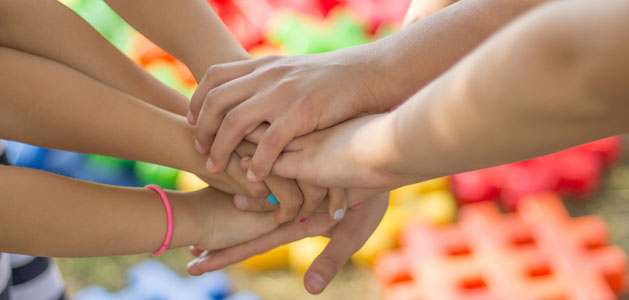
Create a classroom culture that supports effective teamwork

In a project-based approach to learning, students are first presented with a real world problem or issue and then explore content in order to be able to more deeply engage with the problem. These authentic problems given to students are messy and complex, crossing disciplines and reflecting actual problems we face in our world today.
Finding ways to solve these complex problems requires expertise in different areas and thinking in different ways. This is why the “ability to collaborate”> is ranked so high on the lists of essential skills for success in the modern workplace.
But many students don’t enjoy “group” work in the classroom. Some say that it is too hard to get group consensus or even to persuade others to move forward with their ideas. Others complain that some students don’t do their fair share of the work, or conversely that they do all of it.
Working in diverse teams and learning to build on, compensate for, and take advantage of a range of talents and perspectives requires not only strong collaboration skills, but a culture of openness and trust. You can work to establish this culture before project work begins by working together to establish norms for collaboration.
Norms are informal guidelines that outline the behavior a group expects of its members. If norms are high, normal behavior ends up being positive and what you want to see. For example, in a PBL environment, norms for collaboration might be:
Norms are a reflection of culture as much as a set of guidelines, so telling students what the norms are doesn’t work. You need to involve students in the process of thinking about what makes group work enjoyable and productive and then work together to establish guidelines.
Begin by letting students know that they will be participating in group projects in your classroom. You are likely to see a few eye rolls or hear at least a few groans. Before you jump in to discussing these issues as a group, distribute index cards and ask students to think for a short time and then share their thoughts anonymously on the card.
Collect and shuffle the responses and then read them one-by-one to the entire class. You are likely to get ideas like, “I end up having to do all the work,” and “no one listens to my ideas.”
List these negatives on chart paper, a white board, or shared digital document everyone can see. If cards contain similar issues, ask students if they want to reword, or clarify, the existing entry, or move on to the next idea. Create a list of at least 5-7 issues that make group work difficult or unpleasant.
Remind students how collaborative skills are important not only for future employment, but for finding and developing better solutions. Then, choose one issue from the list and work with students to transform it from a negative problem, such as “no one listens to me” to a positive habit, such as “I will listen to each of my teammate’s ideas.”

Give students a chance to form their own groups of 3-4 members. Have each team choose an issue from the list and transform it into a clear statement of positive behavior that contributes to team success. Each team should be able to define the behavior and explain what it looks like in practice.
Have each team share their statement with the rest of the class. Again, record their entries where everyone can see them. After each team has shared, work as a class to further clarify the statements and discuss which ones contribute most important to group success.
The act of discussion is more important that the final list in establishing positive norms for collaboration, so modify the process so that as many students as possible are participating. For example, you might use a circle or talking stick to give each student a turn to share.
Once the list is complete, post it as a reminder of the behaviors that students decided were important to collaborative success. If you want to clearly set expectations for team work during projects, turn their list into a group work contract, and ask students to sign it before they begin a project.
If a student doesn’t want to commit to the guidelines they have designed, you may want to provide them with an alternative option, like a written report, to work on independently. You could also let teams know that they can use the accepted contract as a reason to potentially remove a member whose behavior isn’t contributing to team success.

At a school level, faculty can use these student-developed norms to better identify what it means to collaborate and what great teamwork will look like at your site. Teachers can also use the student-generated lists to develop resources and plans for explicitly teaching collaboration skills, as well as choosing developmentally appropriate collaboration skills to focus on at each grade level.
Establishing norms is essential to successful collaborative project work. Making students an integral part of establishing the norms lays the foundations for a classroom culture that makes students active participants in the learning process. It also reflects the kind of collaborative culture you want and need for successful project-based learning.
Creative Educator can help you bring project-based learning to your school.
Learn More8 first projects to get students using technology
Creative, digital book reviews
Fun and powerful ideas with animated characters

Wixie
Share your ideas, imagination, and understanding through writing, art, voice, and video.

Rubric Maker
Create custom rubrics for your classroom.

Pics4Learning
A curated, copyright-friendly image library that is safe and free for education.

Wriddle
Write, record, and illustrate a sentence.

Get creative classroom ideas delivered straight to your inbox once a month.
Topics